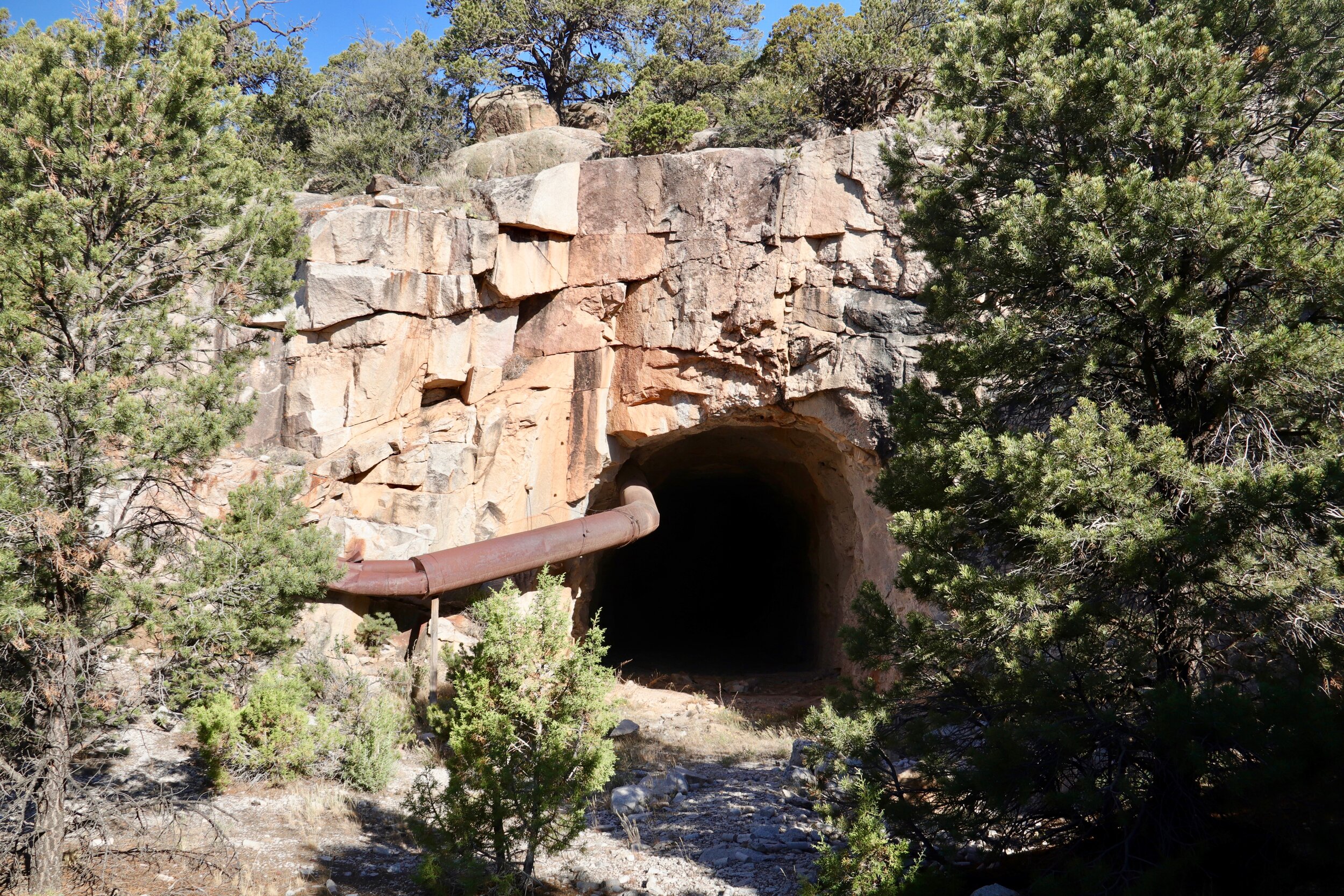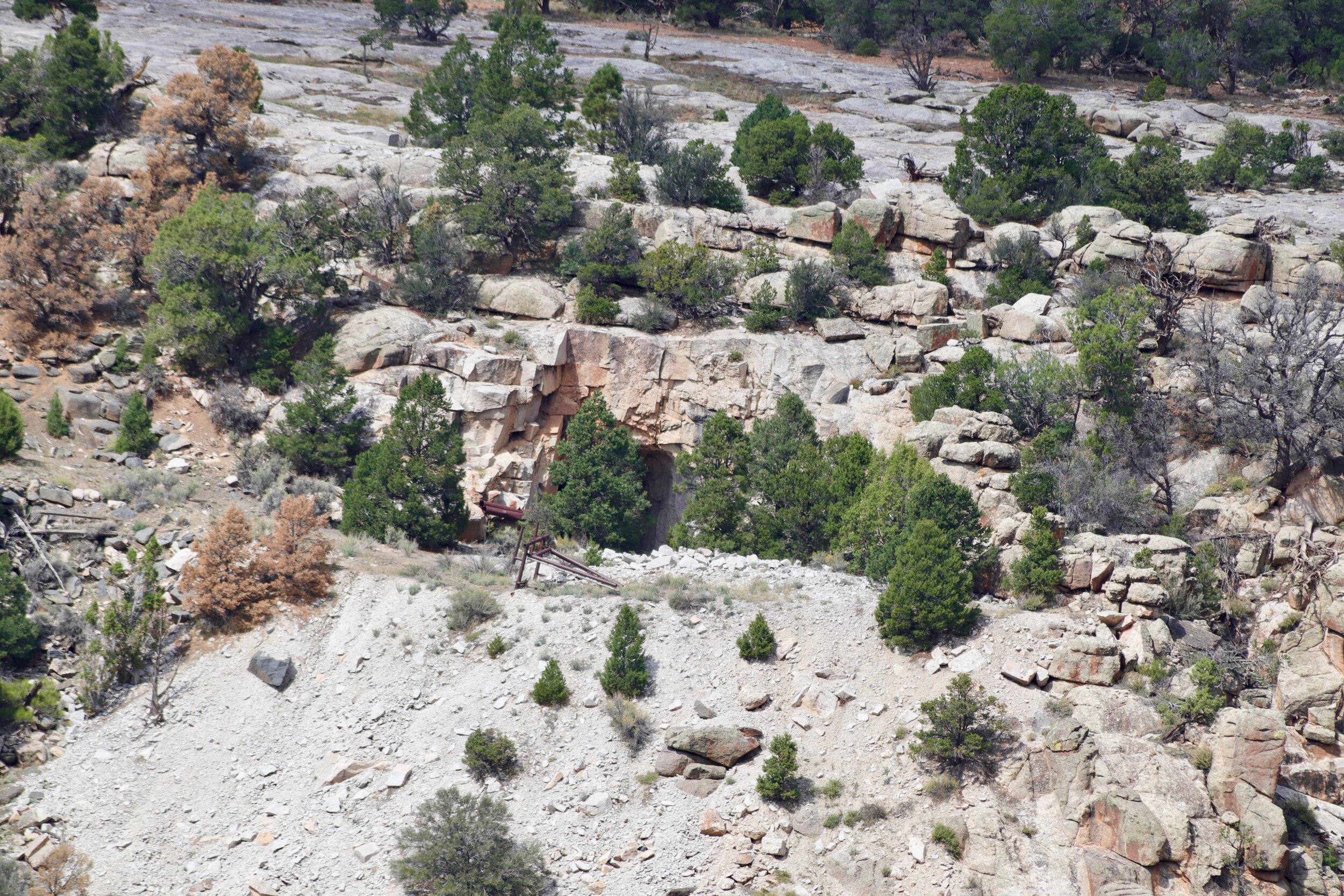
Unaweep Canyon, CO
If you haven’t read the section on the MK Tunnels, read that first.
In addition to the underground explosion tests that were conducted in Buckhorn Wash, Utah, the Army conducted similar tests in the granite formations above Unaweep Canyon in Mesa County, Colorado. It is believed that these tests were conducted in 1948 and 1951. (In between these years, testing was suspended due to lack of funds.) Properly known as Unaweep Underground Explosion Test No 6, this site is not as well known as the MK Tunnels and is much more difficult to access. During my visit, there was minimal evidence of human visitation and the tunnels, themselves, contained almost no graffiti.
The tunnels were drilled by Morrison-Knudsen Company, Inc. of Boise, Idaho under the direction of the U.S. Army Corps of Engineers. The Colorado School of Mines was heavily involved in aspects such as tunnel design and data collection as well as setting off some of the explosions. Here we have a bulldozer at the Buckhorn Wash location pushing out material after it was excavated using a slusher hoist.
Photo credit: “The Em-Kayan”, August, 1948
The Unaweep site originally encompassed 2,160 acres before it was abandoned. There are three, horseshoe-shaped tunnels at this location drilled into the bluffs and the largest is 15 feet in diameter. A small, wood-frame storage building is located nearby along with a steel head frame that was used to hoist a tramcar up from the canyon floor.
There are hundreds of pieces of granite core samples strewn about the site…
…as well as coils of steel cable and metal plates fixed into the ground.
Compared to the MK Tunnels in Utah, these test tunnels are relatively undamaged and likely influenced the construction of military installations such as the NORAD facility in Cheyenne Mountain, Colorado, which is buried under 2,000 feet of solid granite.
Indeed, the main entrance portal to the Cheyenne Mountain Complex has a similar horseshoe shape when compared to the tunnel entrances in Unaweep Canyon.
Let’s take a walk into the main tunnel.
The Underground Explosion Test Program was also hosted at a third site located at White Sage Flat within Dugway Proving Ground, 90 miles southwest of Salt Lake City, Utah. Dugway is a restricted U.S. Army base whose mission involves chemical, biological and nuclear defense. Morrison-Knudsen’s role included the construction of poured concrete, underground structures, which were then subjected to sizable surface blasts of TNT. The largest blast is shown here and involved the detonation of 320,000 pounds of buried explosives to simulate the effects of a penetrating attack by aerial bombardment.
Photo credit: “The Em-Kayan”, July, 1951





